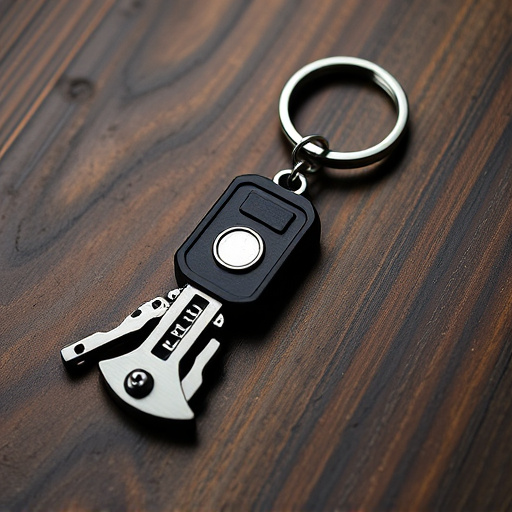Non-lethal keychain defense tools, particularly metal spike keychains, have gained popularity for personal safety due to their discreet and convenient nature. These tools temporarily incapacitate or deter attackers without causing permanent harm. With proper usage and training, they offer a practical solution for close encounters. However, legal implications vary across jurisdictions, emphasizing the importance of understanding local laws before carrying them in public spaces. Metal spike keychains are easily portable and can provide escape time, but they carry risks of injury if misused; alternatives like pepper spray and alarms offer different protection levels with lower risk.
“Dive into the world of non-lethal self-defense with our comprehensive guide on metal spike keychain tools. Understanding these compact devices offers a unique approach to personal safety, especially in today’s bustling urban landscapes. We’ll explore their design, functionality, and legal considerations, shedding light on when and where these tools are permissible.
Furthermore, we’ll analyze the benefits, limitations, and available alternatives for non-lethal keychain defense tools, empowering folks with knowledge to make informed decisions.”
- Understanding Non-Lethal Self-Defense Tools: A Keychain Perspective
- The Design and Functionality of Metal Spike Keychain Tools
- Legal Considerations: When and Where Can You Use a Keychain Defense Tool?
- Benefits, Limitations, and Alternatives to Metal Spike Keychain Defense
Understanding Non-Lethal Self-Defense Tools: A Keychain Perspective
Non-lethal self-defense tools have gained significant popularity among individuals seeking to protect themselves in various situations. These tools are designed to incapacitate or deter an attacker temporarily, giving the user time to escape or seek help, without causing permanent harm. In the context of a keychain, non-lethal defense options offer a discreet and convenient solution for personal safety. Keychain defense tools often come in the form of spikes, pepper spray, or even flashlights with stun features.
When considering a metal spike keychain as a self-defense mechanism, it’s essential to understand its capabilities and limitations. While these keychains can be effective in close-quarters encounters, they are generally not meant to cause serious injury. The design of the spikes is such that they can prick or impale an attacker, leading to temporary pain, disorientation, or even a loss of balance, allowing the user to escape. However, it’s crucial to remember that their effectiveness relies on proper usage and training, as incorrect application could result in self-harm or legal consequences.
The Design and Functionality of Metal Spike Keychain Tools
The design of metal spike keychain tools is both striking and practical, catering to those seeking non-lethal self-defense options in a compact form factor. These tools feature a series of sharp metal spikes that are strategically arranged on a sturdy keychain body, allowing users to create distance from potential threats while infusing fear into would-be assailants. Each spike is designed for maximum penetrance and can be used to disrupt an attacker’s grasp or even cause temporary immobilization.
Functionality is key with these devices. The keychain design makes them easy to carry, ensuring that you have access to a self-defense tool whenever needed. Users simply twist or flip the keychain to expose the spikes, creating a deterrent and buying time in potentially dangerous situations. This innovative approach to personal safety empowers individuals to protect themselves without resorting to lethal force, making metal spike keychains a popular choice for those seeking non-lethal keychain defense tools.
Legal Considerations: When and Where Can You Use a Keychain Defense Tool?
The use of non-lethal keychain defense tools, like metal spikes, is a popular topic among those seeking personal safety options. However, it’s crucial to understand the legal considerations surrounding their use. The legality of such tools varies significantly across jurisdictions, with some regions permitting their possession for self-defense while others strictly regulate or prohibit them.
In many places, non-lethal keychain defense tools are legal as long as they are not carried in a manner that can be considered threatening or aggressive. This usually means using them solely for personal safety within one’s private property or in situations where there is an imminent threat to one’s life or well-being. Public spaces, especially those with strict weapon laws, may have restrictions on the type and carrying of self-defense tools, so it’s essential to check local ordinances before considering their use outside the home.
Benefits, Limitations, and Alternatives to Metal Spike Keychain Defense
Metal spike keychains offer a unique solution for personal defense, providing users with a non-lethal tool to deter potential attackers. One significant advantage is their compact size; they fit easily on a keychain, making them accessible and convenient for everyday carry. This portability allows individuals to be prepared in various situations without adding bulk to their daily essentials. Additionally, the sharp spikes can effectively disable an assailant, providing time for escape or assistance to arrive.
However, there are limitations to consider. The primary concern is the potential for injury; while designed as non-lethal, the spikes can cause pain and even serious wounds if used incorrectly or against particularly hard targets. Furthermore, their effectiveness may vary based on the attacker’s size and strength, and some individuals might find the aggressive nature of these tools off-putting. As such, users must be well-trained in their application to avoid unintended harm. Alternatives to metal spike keychains include pepper spray, personal alarms, and self-defense pens, offering different levels of protection while mitigating some of the risks associated with more violent methods.
Non-lethal keychain defense tools, like metal spike keychains, offer a practical and accessible option for personal safety. By understanding their design, functionality, legal boundaries, and potential drawbacks, individuals can make informed choices to protect themselves in various situations. While these tools have benefits, it’s crucial to be aware of local laws and consider alternative self-defense strategies for comprehensive personal security.
